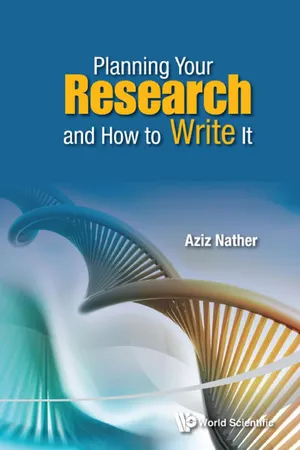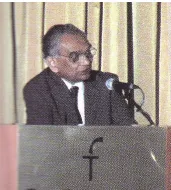
- 350 pages
- English
- ePUB (mobile friendly)
- Available on iOS & Android
Planning Your Research and How to Write It
About This Book
This book is a practical guide for residents and young researchers who are planning to embark on research. It details the significant planning one must first do including choosing a suitable experienced clinician as a supervisor, sourcing for a "winning idea" with significant clinical impact, performing a proper review of literature, defining clearly the objectives to be set and adopting the appropriate methodology. Statistical evaluation must be done from the start of the research to define adequate sample size and also for evaluation of the results. It also advises how one should draw upon relevant and appropriate conclusions from the results obtained.
The ethics of research is also discussed. An all-important factor in research is the procurement of research grants. Readers are guided how to write a proper research proposal to secure these much needed grants.
Many research papers end up as presentations only in local or international conferences. An important additional objective of this book is to guide young researchers how to write their finished product — as a publication in an important international, refereed journal or as a thesis. Chapters have been specially written with tips for scientific writing, selecting the right journal, writing for an original article for a journal, a review article, a case report as well as for a thesis. Tips are also written on what reviewers of a journal look for in an article as well as what examiners look for in a thesis.
This book is a practical guide for residents and young researchers who are planning to embark on research. It details the significant planning one must first do including choosing a suitable experienced clinician as a supervisor, sourcing for a "winning idea" with significant clinical impact, performing a proper review of literature, defining clearly the objectives to be set and adopting the appropriate methodology. Statistical evaluation must be done from the start of the research to define adequate sample size and also for evaluation of the results. It also advises how one should draw upon relevant and appropriate conclusions from the results obtained.
The ethics of research is also discussed. An all-important factor in research is the procurement of research grants. Readers are guided how to write a proper research proposal to secure these much needed grants.
Many research papers end up as presentations only in local or international conferences. An important additional objective of this book is to guide young researchers how to write their finished product — as a publication in an important international, refereed journal or as a thesis. Chapters have been specially written with tips for scientific writing, selecting the right journal, writing for an original article for a journal, a review article, a case report as well as for a thesis. Tips are also written on what reviewers of a journal look for in an article as well as what examiners look for in a thesis.
Readership: Residents, medical officers, young surgeons and physicians who want to embark on research.
Frequently asked questions
Information


Department of Orthopaedic Surgery, NUS








Table of contents
- Cover
- Halftitle
- Title
- Copyright
- Dedication
- Contents
- Preface
- About the Editor
- List of Contributors
- Section I: Introduction
- Section II: Planning Your Research
- Section III: Ethics and Statistics
- Section IV: Writing Your Research
- Section V: Evaluating Your Research
- Appendix